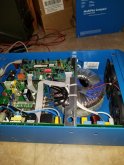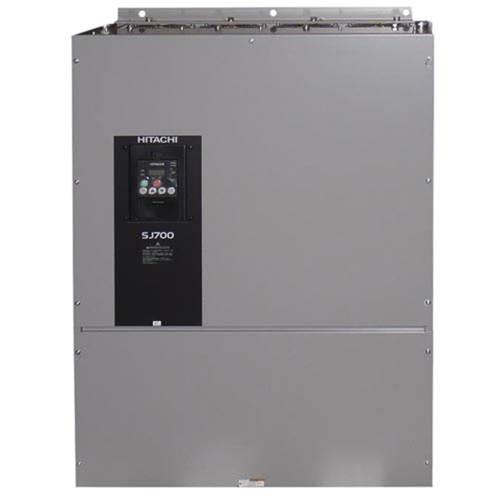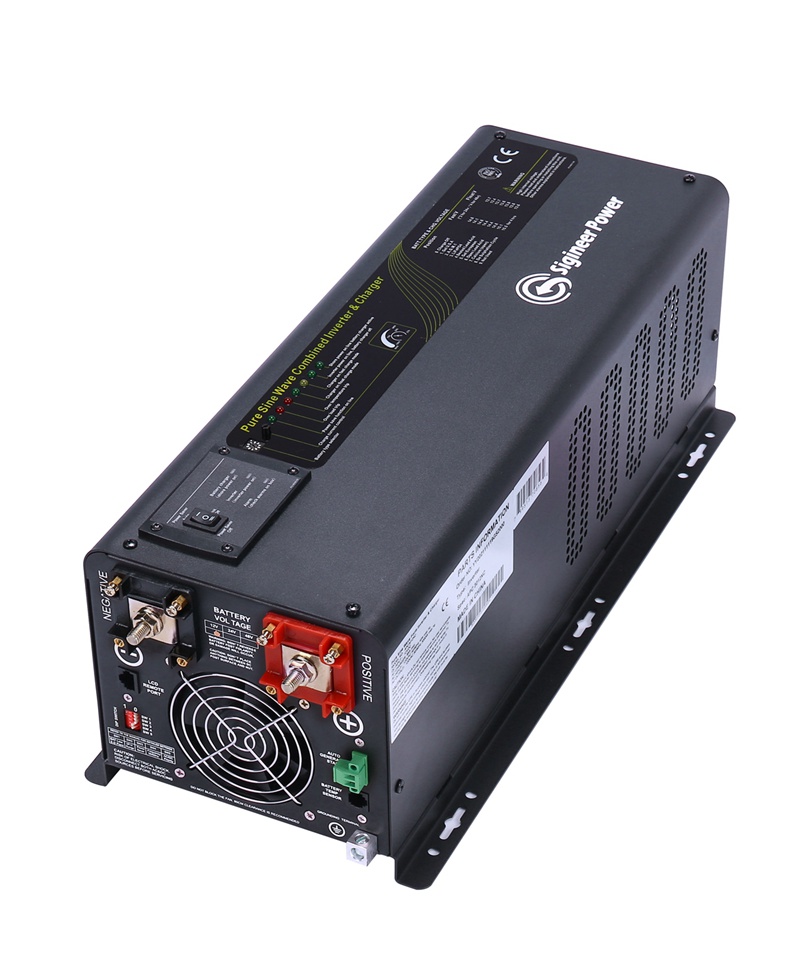I've been reading the replies and I haven't seen any links to an authoritative source. I've seen plenty of opinions. I'll have to search a bit for something better. As far as I know, the manufacturers have given up the heavy steel transformers and replaced them with small Ferrite core transformers and power MOSFETs. This means that they save $$$ and the consumer saves $$$. But if the consumer needs the heavy iron transformers, it costs a lot more.
The cheap manufactures may have given up on serious transformers, but high quality inverters continue to use them. This is the inside of my Victron Multiplus 24/2000-50.

LF vs HF is not really the thing it used to be.
Back in the dawn of time, saber-tooth cave inverters consisted of inefficient, heat producing electronic switches that reversed the polarity of a 200 VDC power supply 120 times per second, creating what was probably the worst excuse for 60 Hz 120 VAC power (certainly the noisiest electrically) that has ever existed.
Somebody got the bright idea of running that terrible, square wave power through a ferroresonant transformer which did a credible job of converting that garbage into relatively pure sine wave power and in the process added some serious surge capability (read up on ferroresonant transformers if you care to understand why). This is when "Monster Surge LF" inverters became a thing.
Some time after the fall of the Roman Empire, but decades before today, people figured out how to make true sine wave inverters that didn't need nearly as much filtering as the caveman inverters did. Unfortunately not long after this, the Chinese noticed and said "hey, we can copy this only we will squeeze every last penny out the design so we can sell them for $100 and still make a huge profit". This is when "wimpy HF" inverters became a thing. There is nothing inherently wimpy or bad about HF inverters. A motor drive (VFD) is essentially a variable frequency/voltage version of a HF inverter and you can buy VFD drives out of a catalog that will output over 200,000 W (that is what a 300 HP Motor requires). they are not exactly cheap, but considering how much power they can output all I can say is WOW!
SJ700-2200HFU2

www.driveswarehouse.com
The problem is that a lot of the "value engineered" Chinese crap inverters perform about as well as those $15, 200W powered PC speakers did.
You can buy excellent, reliable HF inverters that deliver their rated power and can handle surge loads without problems. The reason why we aren't all running out to buy them is they cost 2 or 3 times as much as the Chinese crap does and we want the real quality for the China-Crap price.
It is like looking at SawzAll saws and comparing Harbor Freight to a Milwaukee. They kinda look the same and you see similar claims printed on the box. But one costs $$ and the other costs $$$. What to bet which one will be sitting in a dumpster in a couple of months and which one is actually able to do what it claims to be able to do?
I went down this trail for a while. The inverter I bought is the above Victron Multiplus. Yes it is big and heavy. Yes it is was expensive. But 20 years from now my electrical system will still be meeting requirements.
-Edit-
That is not a ferroresonant transformer. The Multiplus converts the battery voltage into an incredibly high current AC waveform then passes it through a step up transformer. This is another advantage to a high quality inverter. The high voltage AC is galvanically isolated from the DC batteries. Even if components fail (and parts will eventually fail in every piece of equipment ever made), that inverter is not going to put 120 VAC on my battery pack because of that transformer.





